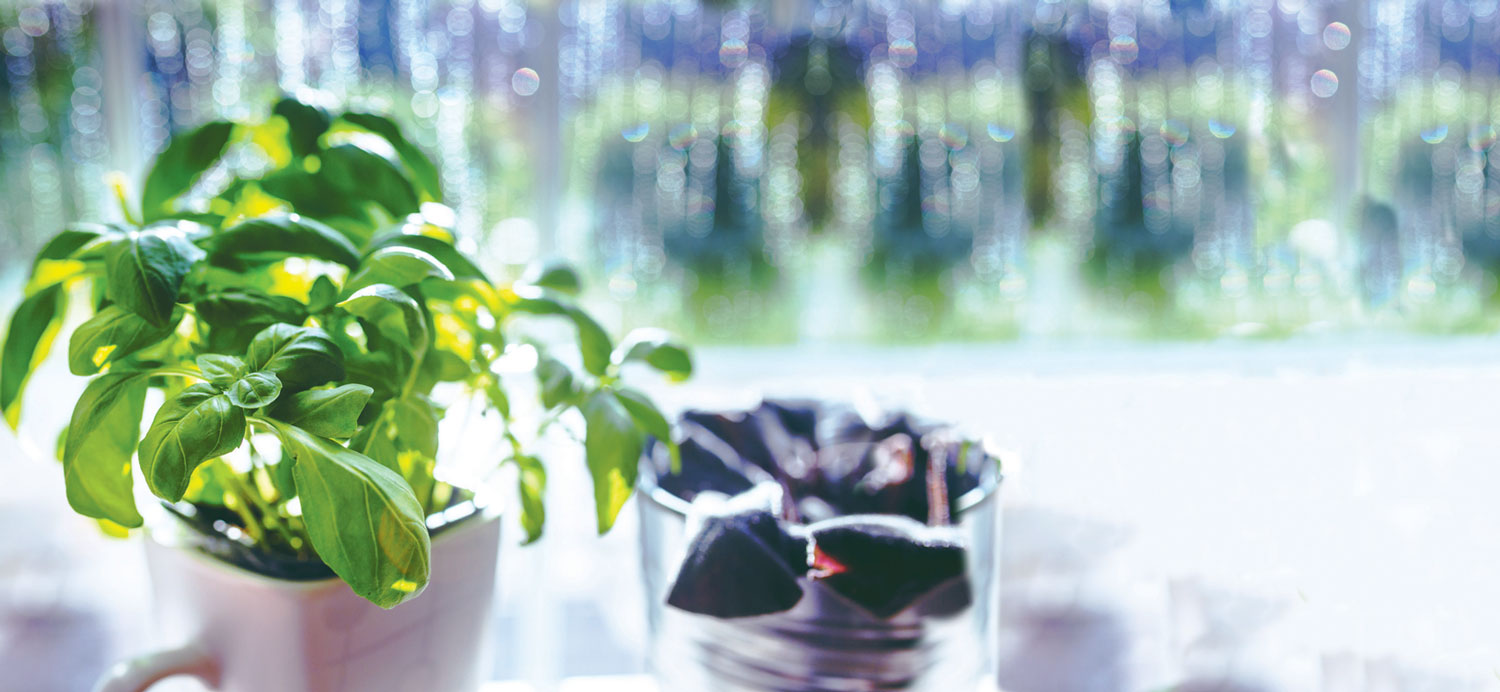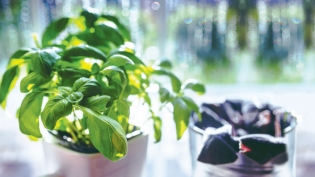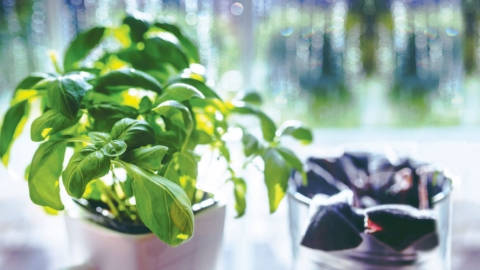Basil: King of Herbs
Sweet basil comes rolling into spring as the divine herb that brings a fresh, bright flavor to virtually anything it’s added to. Basil comes to us from India, where it has been cultivated for 5,000 years. There are endless varieties—Thai, African Blue, Lemon, Pineapple, Cinnamon—in a rainbow of colors—purple, pale green, dark green and variegated. (Check out our local farmers’ markets for varieties. Earthtrine Farm at the Ojai Certified Farmers’ Market organically grows some of the less common basils.)
Asian cuisines use Thai basil prominently. But sweet basil comes to us from the Mediterranean region where it is a staple of Italian cuisine, perhaps because basil goes so well with all of the many Mediterranean vegetables—eggplant, squash, garlic, onions, and (best of all) tomatoes. The name comes from the Greek word for king—basileus. The French call it Herb Royale. It just wouldn’t be spring without the king of the herbs.
If you want to venture into DIY gardening, basil is a good place to start. It grows well in pots or the ground and can act as an insect repellant to other plants. Let the plant dry out between watering and pinch off the leafy tips and blossoms to keep the plant producing. The small white flowers are edible and have the same bright flavor as the leaves. Use them as a delicate and decidedly springlike garnish atop dishes.
Trim the stems of basil bouquets and store in a vase or glass of water for a week or more on your countertop. Any stems not used fresh can be dried indoors, hung from a cabinet pull or laid out on a wire rack. Once dry, store in a Mason jar or other airtight container. You’ll then have the super fresh taste of basil at your fingertips to enjoy all winter long.
The secret to chopping basil is to use the technique/cut called chiffonade, which means “ribbons” in French. The thin leaves become crushed and are difficult to chop if you just cut them one at a time or loose. Stack five or six leaves on top of one another, and roll the stack into a cigar-shaped log. Thinly slice the roll crosswise and enjoy the delicate ribbons.
Fresh basil should be added to cooked items at the last minute, since long cooking will diminish the flavor. So sprinkle it liberally as the finishing touch to pizza, pastas or bruschetta, or even Pickled Onion and Basil Crostini recipe at left.







